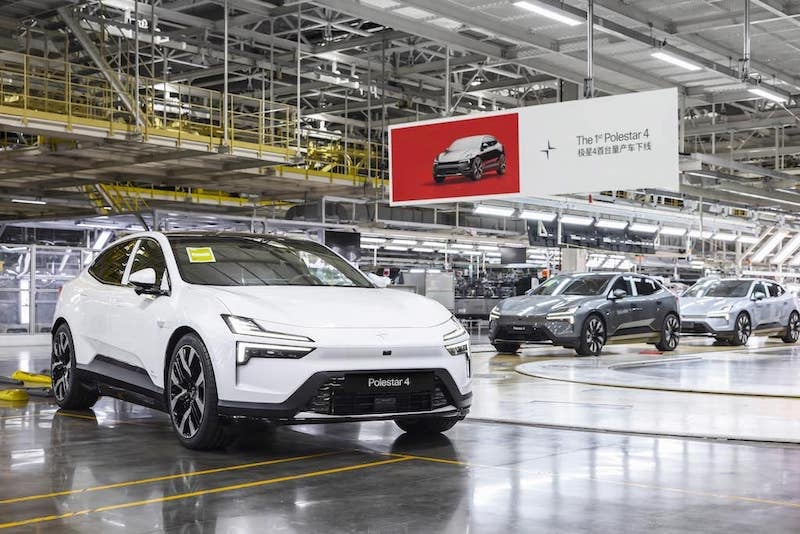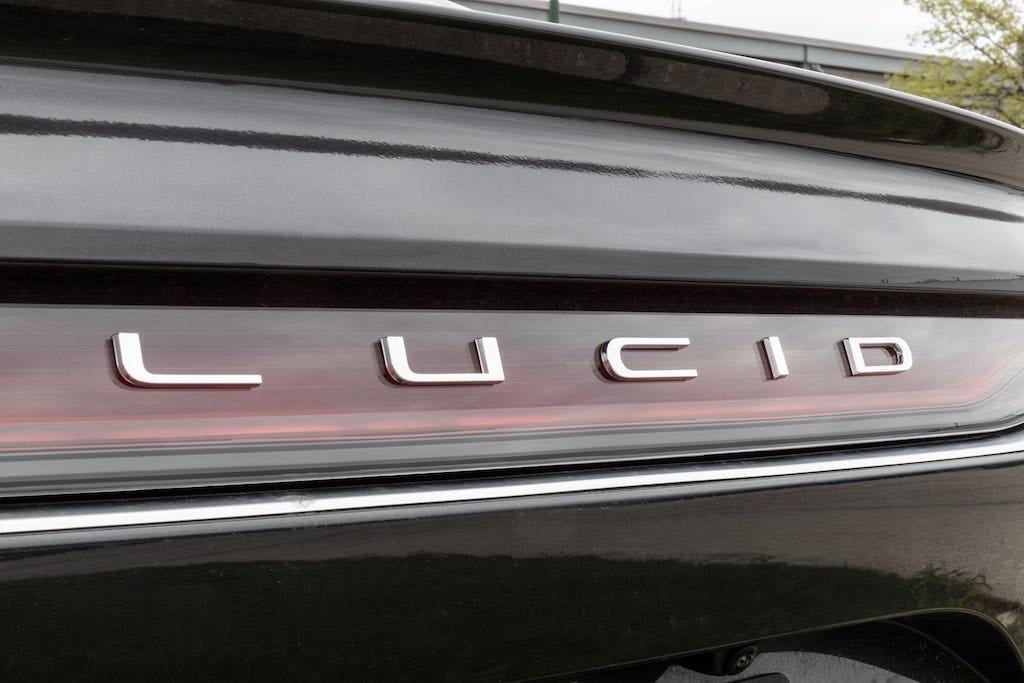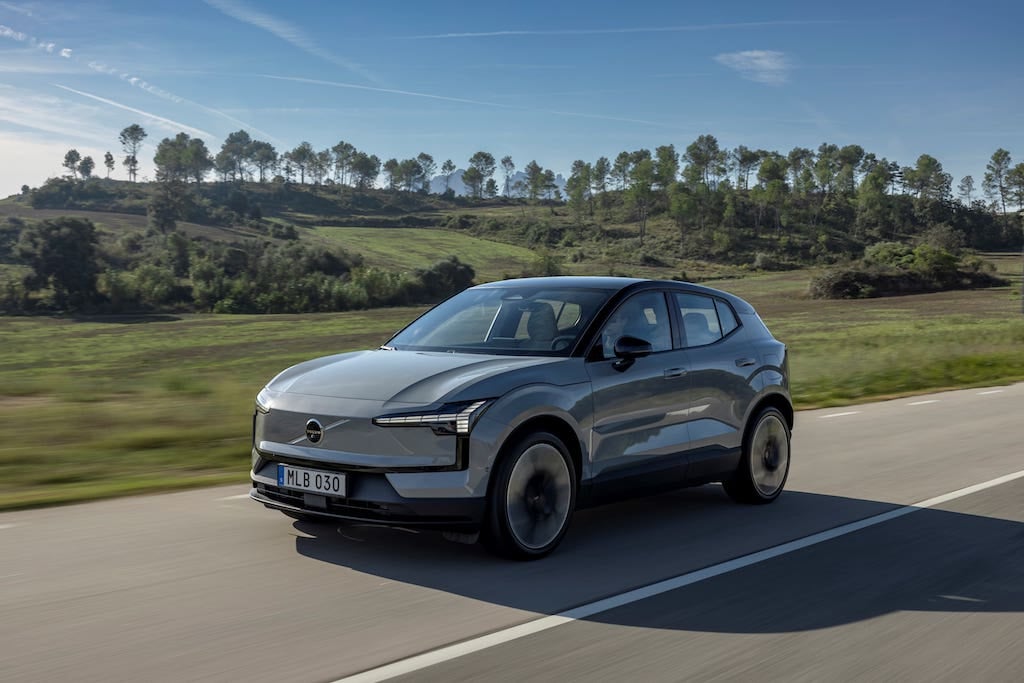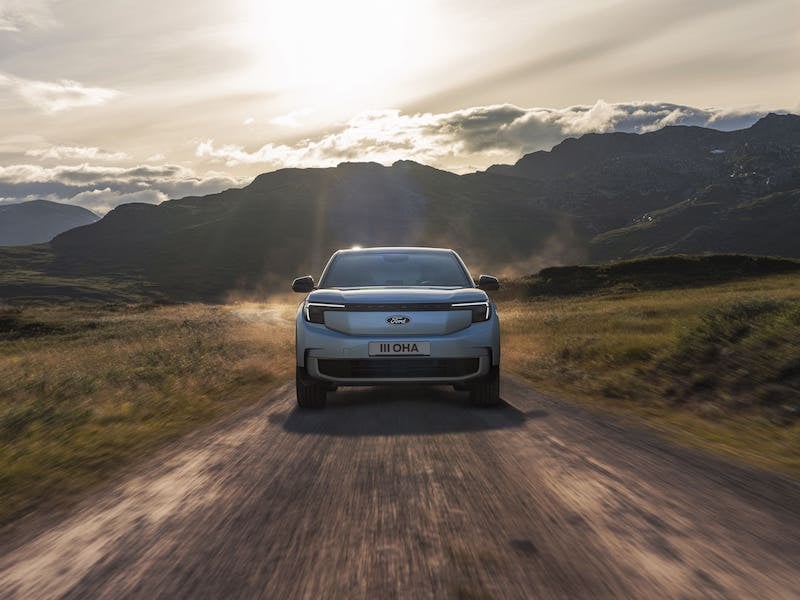
With a seemingly unwavering popularity, sports utility vehicles (SUVs) are one of the biggest vehicle segments across the world, outselling passenger cars in many markets. And with their versatile design, practical interiors, and comfortable driving experience, it’s easy to understand why.
Whereas SUVs were once seen as a key driving force behind the increasing carbon emissions from road transport, the growing number of electric SUV models is sparking new hope for an environmentally friendly SUV landscape. In fact, electric SUVs have outsold other types of EVs for the first time in 2022. While we wait for the official numbers to come in for 2023, it's nice to look ahead at some exciting new models coming out in 2024.
To help you sift through the dozens of new electric SUVs, we’ve compiled below the most anticipated models coming out in 2024 (in a random order) and explored their specs in detail, including how long they take to charge.
This article features the following 5 models:
Polestar 4
 Picture via Polestar’s official website under copyright and image rights (for editorial use)
Picture via Polestar’s official website under copyright and image rights (for editorial use)
Barely a year after announcing the Polestar 3, the Swedish brand is adding another car to its lineup with the Polestar 4. Slightly more compact than the 3, the Polestar 4 is a compelling mid-size SUV building on the brand’s sleek, streamlined looks and aiming to conquer the large SUV market.
The Polestar 4’ s headlining feature is its lack of a rear windscreen, replacing it with a video projection into the rear-view mirror. This helps maximize headroom in the rear seats and solves the issue of poor visibility with sloped coupé-like rear windshields, according to the brand.
Polestar 4 specs
Polestar 4 model variations
The Polestar 4 comes in two models:
- Long range Single motor: the base model has a 94 kWh battery and a range of 372 miles (599 km).
- Long-range Dual motor: the performance version has a 94 kWh battery and a range of 350 miles (563 km).
Polestar 4 range
The range of a Polestar 4 is between 350 and 372 miles (563 and 599 km), depending on the model.
Polestar 4 battery
Both versions of the Polestar 4 have a 94 kWh battery capacity.
Polestar 4 price
The Polestar 4 is expected to start at around $60,000* at the time of writing, with Polestar having yet to confirm pricing details per model.
*The cost of a Polestar 4 can vary based on your location and dealership. At the time of writing this article, we took this estimated price from Polestar's US website.
Polestar 4 release date
At the time of writing, the Polestar 4 has started production in China and is expected to begin shipping in Europe, North America, and the rest of Asia Pacific in early 2024.
Polestar 4 charging speed
The time it takes to charge up a Polestar 4 varies based on the power output and type of charger. We’ve calculated the charging time with the most common charging outputs at each charging level.
|
Charging level |
Charging output |
Charging times* |
|
Level 2 (AC) |
7.4 kW |
14h 06m |
|
Level 2 (AC) |
11 kW |
9h 29m |
|
Level 2 (AC) |
22 kW |
4h 44m |
|
Level 3 (DC) |
50 kW |
1h 15m |
|
Level 3 (DC) |
125 kW |
33 min |
|
Level 3 (DC) |
200 kW |
24 min |
*These numbers provide a calculated estimation of charging times – from 0 to 100 percent (AC) and 20 to 80 (DC) percent state of charge (SOC) – and do not reflect actual charging times or real-life situations. For a more accurate representation of (or more information on) actual charging times, please refer to the original manufacturer or certified dealerships. The results are based on an equation that uses the standard battery size and average performance of charging stations as metrics and are rounded up for readability. The highest DC charging power is the maximum power supported by the vehicle.
Lucid Gravity
 The Californian carmaker behind the popular Lucid Air is now entering the SUV market with the Lucid Gravity. The company’s second vehicle, the Gravity, aims to redefine the future of SUVs, combining performance, range, luxury, and utility in an unprecedented value proposition.
The Californian carmaker behind the popular Lucid Air is now entering the SUV market with the Lucid Gravity. The company’s second vehicle, the Gravity, aims to redefine the future of SUVs, combining performance, range, luxury, and utility in an unprecedented value proposition.
Lucid Gravity specs
Lucid Gravity model variations
At the time of writing, Lucid hasn’t yet confirmed the models and trims of the Lucid Gravity. We can likely expect a similar model structure to the Lucid Air, which has 5 trims.
Lucid Gravity range
The Lucid Gravity is expected to have a range greater than 440 miles (708 km), although cheaper trims may have a lower range.
Lucid Gravity battery
At the time of writing, Lucid has not yet confirmed the Lucid Gravity’s battery capacity.
Lucid Gravity price
The Lucid Gracity is expected to start under $80,000*, although pricing details per model are yet to be confirmed by Lucid.
*The cost of a Lucid Gravity can vary based on your location and dealership. At the time of writing this article, we took this estimated price from Lucid’s website.
Lucid Gravity release date
At the time of writing, the Lucid Gravity is expected to start shipping in late 2024.
Volvo EX30
 Picture via Volvo’s official website under copyright and image rights (for editorial use)
Picture via Volvo’s official website under copyright and image rights (for editorial use)
Volvo is entering the compact electric SUV market in 2024 with the Volvo EX30, the smallest and most affordable electric SUV in its lineup. Like other cars from the Swedish manufacturer, the Volvo EX30 includes a range of safety features, including pilot assist, a driver alert system that monitors drowsiness, and a door-opening alert to detect incoming vehicles from behind.
Volvo EX30 specs
Volvo EX30 model variations
The Volvo EX30 will come in 3 versions:
- Single Motor: the base model is rear-wheel drive with a 51 kWh battery and up to 214 miles (344 km) range.
- Single Motor Extended Range: the extended range model is rear-wheel drive with a 69 kWh battery and up to 296 miles (476 km) range.
- Twin Motor Performance: the dual motor version is an all-wheel drive with a 69 kWh battery and up to 280 miles (450 km) range.
Volvo EX30 range
The Volvo EX30 has a range between 214 and 296 miles (344 and 476 km), depending on the model.
Volvo EX30 battery
The Volvo EX30 has a battery capacity of 51 or 69 kWh, depending on the model.
Volvo EX30 price
Currently, the starting price for a Volvo EX30 is expected to be $34,950*.
*The cost of a Volvo EX30 can vary based on your location and dealership. At the time of writing this article, we took this estimated price from Volvo’s website.
Volvo EX30 release date
At the time of writing, the Volvo EX30 is expected to start shipping in summer 2024.
Volvo EX30 charging time
The time it takes to charge up a Volvo EX30 varies based on the power output and type of charger. We’ve calculated the charging time with the most common charging outputs at each charging level.
|
Charging level |
Charging output |
Charging times* (51 kWh battery) |
Charging times* (69 kWh battery) |
|
Level 2 (AC) |
7.4 kW |
7h 39m |
10h 21m |
|
Level 2 (AC) |
11 kW |
5h 09m |
6h 58m |
|
Level 3 (DC) |
50 kW |
40 min |
55 min |
|
Level 3 (DC) |
125 kW |
21 min |
27 min |
|
Level 3 (DC) |
175 kW |
16 min |
21 min |
*These numbers provide a calculated estimation of charging times – from 0 to 100 percent (AC) and 20 to 80 (DC) percent state of charge (SOC) – and do not reflect actual charging times or real-life situations. For a more accurate representation of (or more information on) actual charging times, please refer to the original manufacturer or certified dealerships. The results are based on an equation that uses the standard battery size and average performance of charging stations as metrics and are rounded up for readability. The highest DC charging power is the maximum power supported by the vehicle.
Honda Prologue

The Honda Prologue is the first product of a collaboration between Honda and General Motors, built on GM’s Ultium platform shared with the Chevrolet Blazer EV. With Honda claiming its name is a symbol of the car’s role within the company’s electrification strategy, the Prologue aims to offer an electric alternative to the Honda CR-V for the American market.
Honda Prologue specs
Honda Prologue model variations
The Honda Prologue is expected to come in five variations:
- Honda Prologue 2WD EX
- Honda Prologue 2WD Touring
- Honda Prologue AWD EX
- Honda Prologue AWD Touring
- Honda Prologue AWD Elite
Honda Prologue range
At the time of writing, Honda has not yet confirmed the range per model but expects a 300-mile (483 km) EPA range rating.
Honda Prologue battery
The Honda Prologue has an 85 kWh battery.
Honda Prologue price
At the time of writing, the Honda Prologue is expected to have a starting price in the upper $40,000s*.
*The cost of a Honda Prologue can vary based on your location and dealership. At the time of writing this article, we took this estimated price from Honda's US website.
Honda Prologue release date
At the time of writing, the Honda Prologue is expected to start shipping in North America in early 2024. Honda hasn’t currently announced plans to ship the Prologue outside North America.
Honda Prologue charging time
The time it takes to charge up a Honda Prologue varies based on the power output and type of charger. We’ve calculated the charging time with the most common charging outputs at each charging level.
|
Charging level |
Charging output |
Charging times* |
|
Level 2 (AC) |
7.4 kW |
12h 45m |
|
Level 2 (AC) |
11 kW |
8h 35m |
|
Level 3 (DC) |
50 kW |
1h 07m |
|
Level 3 (DC) |
125 kW |
31 min |
|
Level 3 (DC) |
155 kW |
26 min |
*These numbers provide a calculated estimation of charging times – from 0 to 100 percent (AC) and 20 to 80 (DC) percent state of charge (SOC) – and do not reflect actual charging times or real-life situations. For a more accurate representation of (or more information on) actual charging times, please refer to the original manufacturer or certified dealerships. The results are based on an equation that uses the standard battery size and average performance of charging stations as metrics and are rounded up for readability. The highest DC charging power is the maximum power supported by the vehicle.
Ford Explorer

Picture via Ford’s official website under copyright and image rights (for editorial use)
Ford is releasing its third electric vehicle next year with the Ford Explorer EV, exclusive to the European market. Despite the familiar model name, the Explorer EV is built on Volkswagen’s MEB platform, shared with the VW ID.4 and Audi Q4 e-tron, as part of the strategic alliance between the two carmakers. With its compact design, versatile cabin, and competitive price, the Explorer is designed to spearhead Ford’s ambition of electrifying its European fleet by 2030.
Ford Explorer specs
Ford Explorer model variations
The Ford Explorer is expected to come in two trims: Select and Premium.
Ford Explorer range
At the time of writing, Ford hasn’t confirmed official range figures for the Explorer.
Ford Explorer battery
At the time of writing, Ford hasn’t confirmed the official battery capacity for the Explorer. However, given it shares a platform with the VW ID.4, it will likely feature the same 52 and 77 kWh battery options.
Ford Explorer price
The Ford Explorer is expected to start at less than €45,000*.
*The cost of a Ford Explorer can vary based on your location and dealership. At the time of writing this article, we took this estimated price from Ford's UK website.
Ford Explorer release date
At the time of writing, the Ford Explorer is expected to start shipping in Summer 2024 across Europe and the UK. Ford hasn’t currently announced any plans to ship outside of this region.
An exciting year for electric SUVs
There has never been a better time for those looking to switch to an electric SUV, with a range of new models from established carmakers and pioneering new entrants alike. Now more than ever, electric SUVs are increasingly reaching price parity with their combustion engine counterparts, making them attainable for a much larger audience.
If you’re looking to buy an electric SUV or have never owned an EV before, have a look at our complete EV charging guide to learn everything you need to know about EV charging.
Related articles

Smart Charging for Solar EV Systems: What is possible today?
There are a variety of smart solutions available, capable of optimizing your solar EV charging system in different...

Can solar EV charging save you money?
Charging your EV using household solar panels can indeed save you money on your utility bills. How much money solar EV...

How to optimize your solar set-up for charging electric cars at home
There are several ways EV drivers can optimize a homegrown solar system to ensure their EV recharging needs are met....